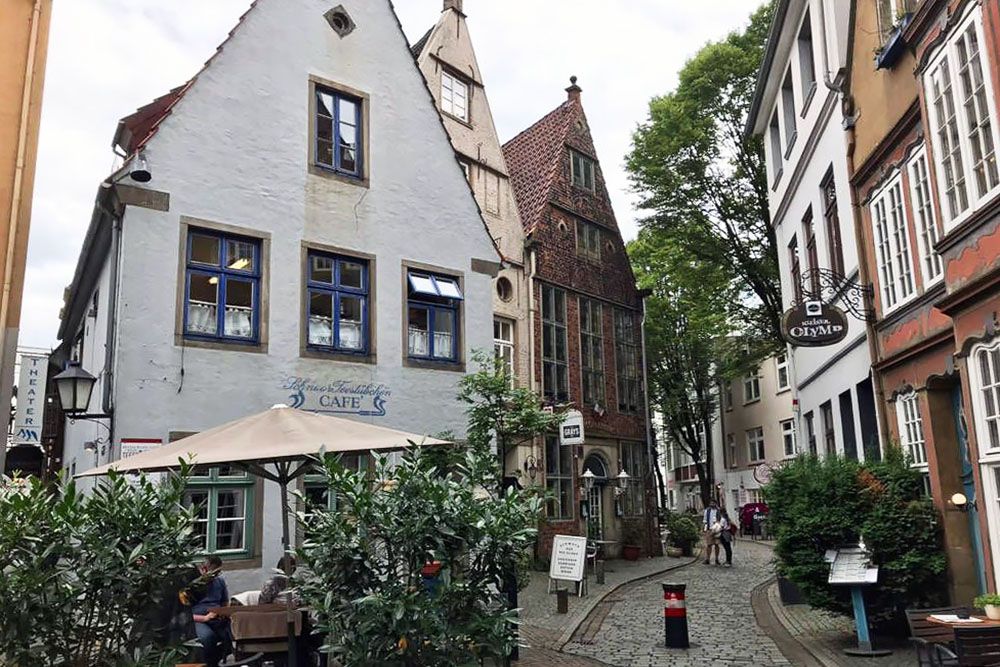Bremen, a Hanseatic city, is a delightfully cosy town. In the historic centre, all the sights are conveniently close together. There’s an abundance of pleasant terraces, naturally on the Market Square. But along the Weser river and in Schnoor, the oldest district of the city, there are plenty as well. In Bremen, you can have an excellent time over a weekend. We’ll take you to the most beautiful spots in Bremen.
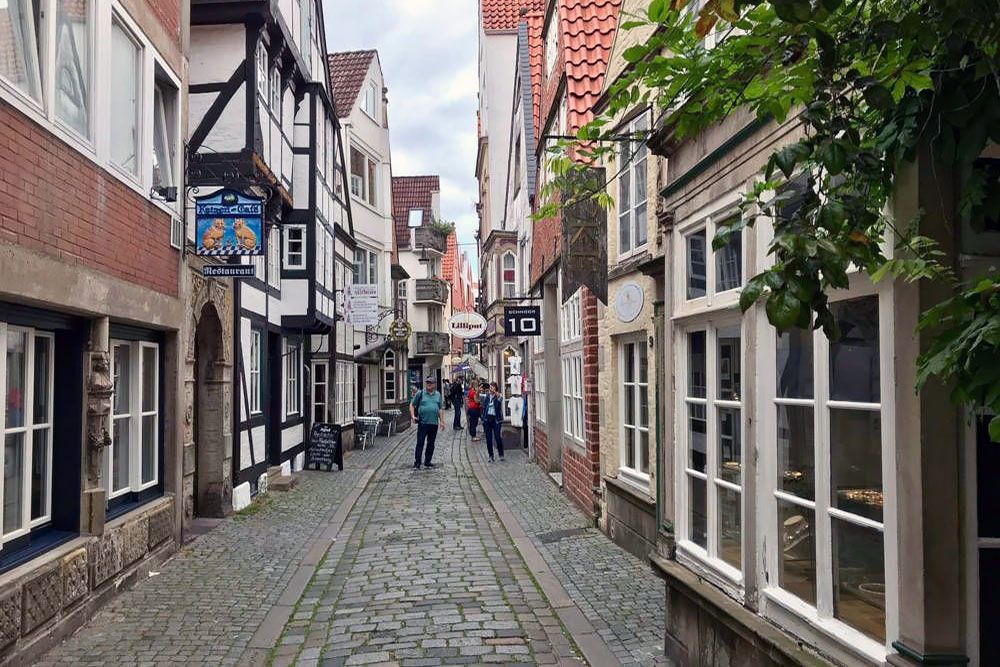
The history of Hanseatic Bremen
Around 787, Charlemagne founded a bishopric on the site where Bremen now stands. At that time, the city was an important stronghold in Northern Europe for converting people to Christianity. In 1260, Bremen became a member of the Hanseatic League. Merchants from various cities in the Netherlands, Belgium, Germany, Denmark, and other countries formed trade agreements with each other. Bremen frequently had conflicts with the other members. As a result, the city was expelled from the league three times. Ultimately, Bremen benefited greatly from the cooperation. It brought the city great prosperity and wealth. There was significant activity on the banks of the Weser.
Today, little of that port activity remains visible. For that, you need to travel 55 kilometres away to Bremerhaven. Due to the silting of the river, large seagoing vessels couldn’t easily reach Bremen. Hence, in the 19th century, the port was relocated. Together with Bremerhaven, Bremen now forms the smallest federal state of Germany.
During World War II, Bremen suffered heavily from bombings. More than half of the city was destroyed. Fortunately, there’s no sign of this in the old centre. Buildings have been restored or miraculously spared.
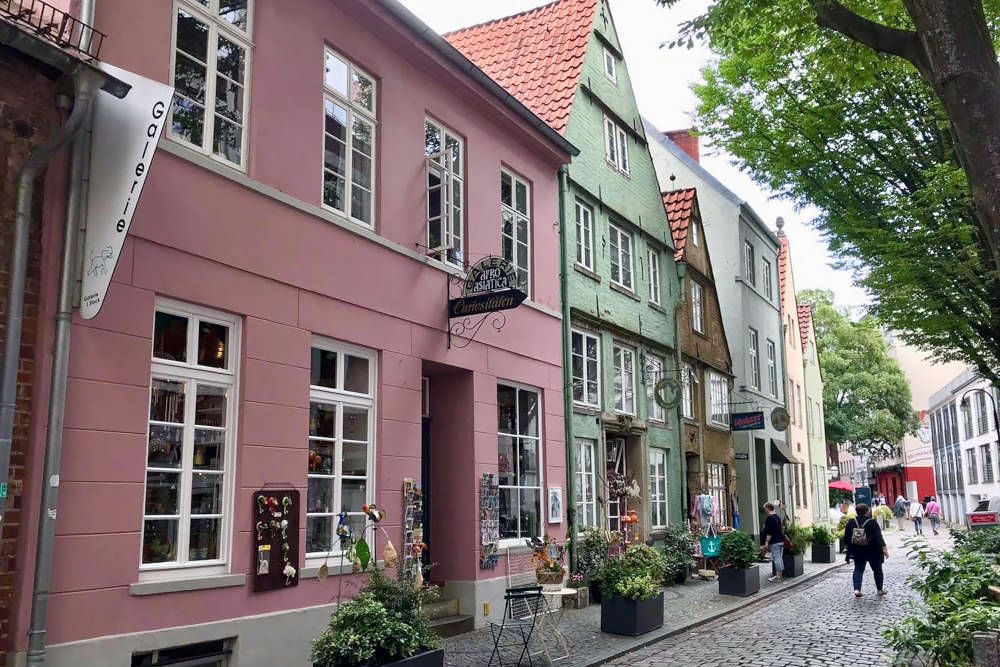
The loveliest spots in Hanseatic Bremen
For us, visiting Bremen was special in two respects. We saw a friend who travelled with us for a period during our world trip. Additionally, this was our first foreign trip after the easing of travel advice due to the covid pandemic. We brought plenty of face masks, which are mandatory in buildings in Germany. Yet, it didn’t determine the atmosphere of the trip. The cosiness of the city soon made us forget that we occasionally wore a face mask. The terraces were packed, and nowhere did we feel like we were walking through a lifeless city.
These are the highlights you shouldn’t miss during a visit to Hanseatic Bremen:
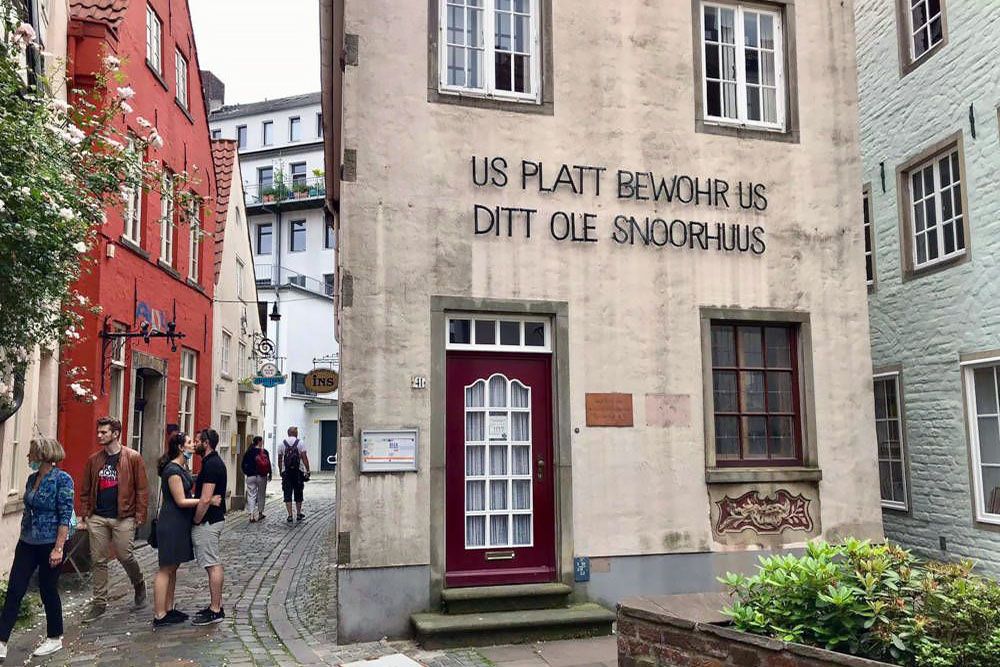
Schnoor
In our opinion, the Schnoor district is the highlight of Hanseatic Bremen. This is the only medieval part of the city that has been preserved. Through small winding streets and alleys, you’ll see one picturesque little house after another. They all date from the 15th and 16th centuries. The nice thing is that they all have a separate colour; you’ll see all pastel shades as you stroll through the streets. Some are quite askew. In the past, these little houses served as homes and workshops for fishing families. Now you’ll find many galleries, goldsmiths, and antique shops with lovely knick-knacks. But there are also plenty of cosy restaurants and small cafés in Schnoor.
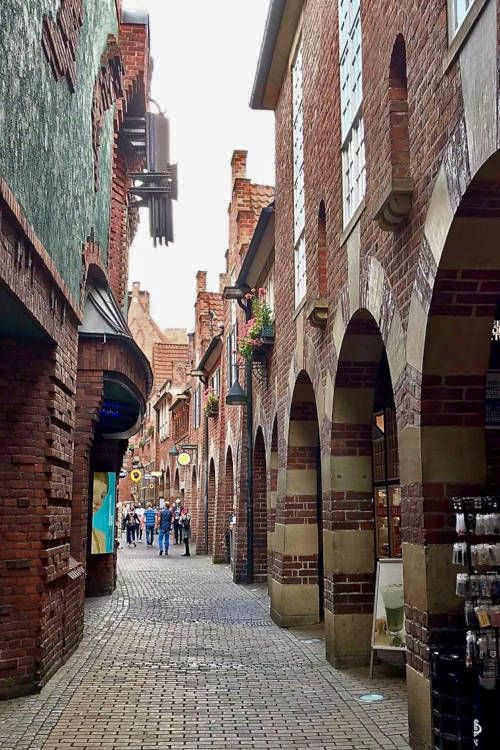
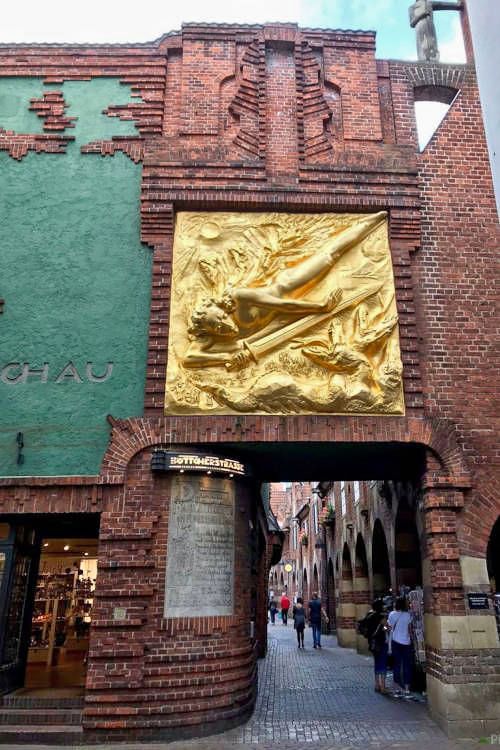
Böttcherstrasse
Another highlight in Hanseatic Bremen is Böttcherstrasse. Perhaps one of the shortest streets in the city, but take plenty of time for it! In the Middle Ages, this was the street where the coopers did their work. The location between the river and the market made it an ideal spot. But with the relocation of the port in the 19th century, the coopers left the street. The street fell into severe disrepair.
We owe our ability to enjoy this beautiful street now to a wealthy coffee merchant, namely Ludwig Roselius. This Ludwig, inventor of decaffeinated coffee, bought all the buildings. Together with an artist, he renovated the street. The result is impressive. Beautiful red brick buildings in Art Deco style. You’ll now find lovely design shops and trendy boutiques. Famous is the Bremen Glockenspiel at one of the buildings. But the Robinson Crusoe House and House Atlantis are also highlights. At the end of the street, you’ll also find the Tourist Information Centre.
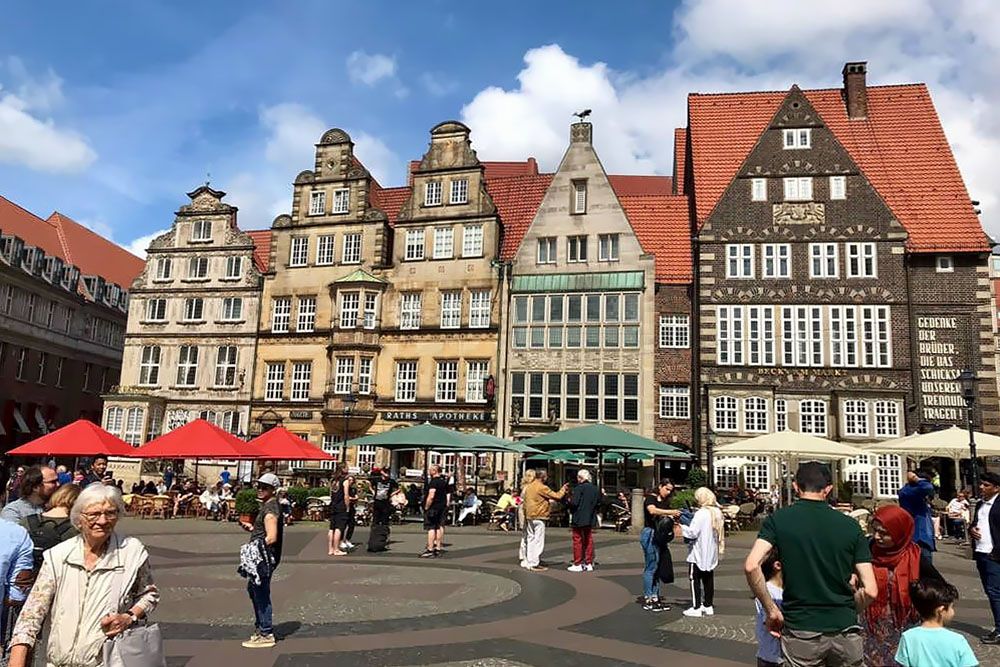
The market square, Beating heart of Hanseatic Bremen
The central square of the city is the “Marktplatz”. Proudly standing on the square since 1404 is the Roland statue. It symbolises Bremen’s independence. It’s the largest free-standing medieval statue in Germany. Around the Market Square are beautiful buildings. And of course, many pleasant terraces. This is truly the vibrant centre of the city. Especially the west side of the Market, with the splendid façades of the beautiful buildings, is attractive. At the back of the Market, on Saturdays, there’s a real produce market where you can buy numerous local delicacies. We’ll highlight a few sights on the Market Square.
Town hall
The magnificent town hall dates from the early 1400s. It’s no wonder this building, along with the Roland statue, is on the UNESCO World Heritage list. Do you like wine? Then be sure to visit the Council Cellar. Here you’ll find the largest collection of German wines.
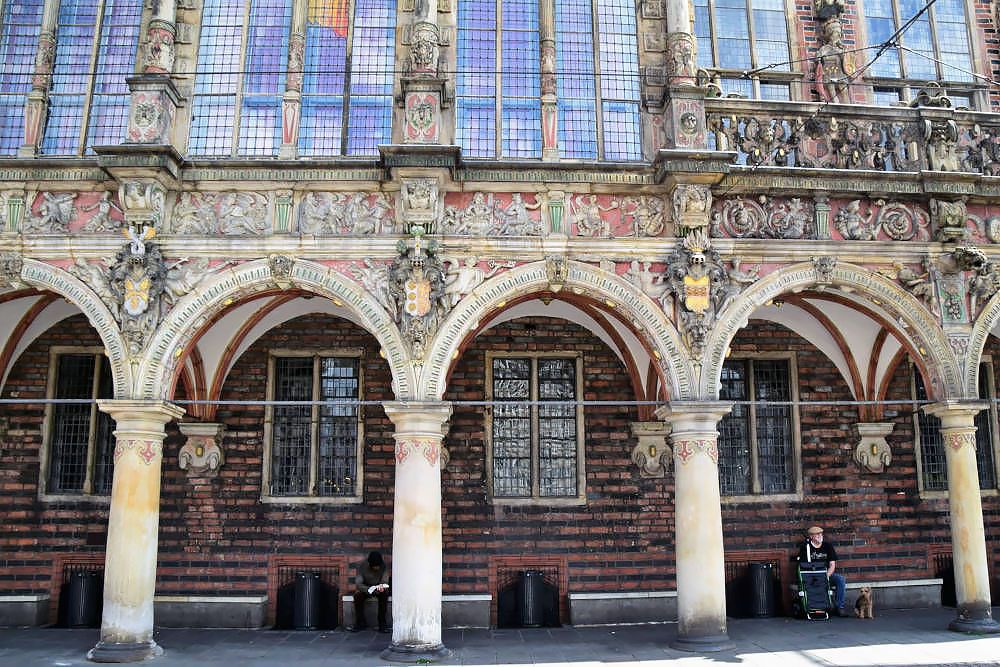
St. Petri Dom
The oldest parts of the early Gothic Cathedral of Bremen are already more than 1200 years old. The church is famous for its immense organs. When we visited the church, the free organ concert had just started. Every Saturday from about the third week of June to the end of September, there’s an afternoon concert at 1:30 PM. During our visit, the organist even played a jazz number. It was special to hear it that way in a large church.
Bremen Town Musicians
Perhaps Hanseatic Bremen is best known for the statue of the Bremen Town Musicians. Four animals, a donkey, dog, cat, and rooster, stand on top of each other next to the Town Hall. The Brothers Grimm wrote a fairy tale in which the animals travelled to Bremen to make music.
When you see the statue, you’ll notice that the donkey’s front legs are very shiny white. The story goes that whoever grasps both front legs may make a wish that will come true. You can also see the same statue in the Latvian capital Riga.
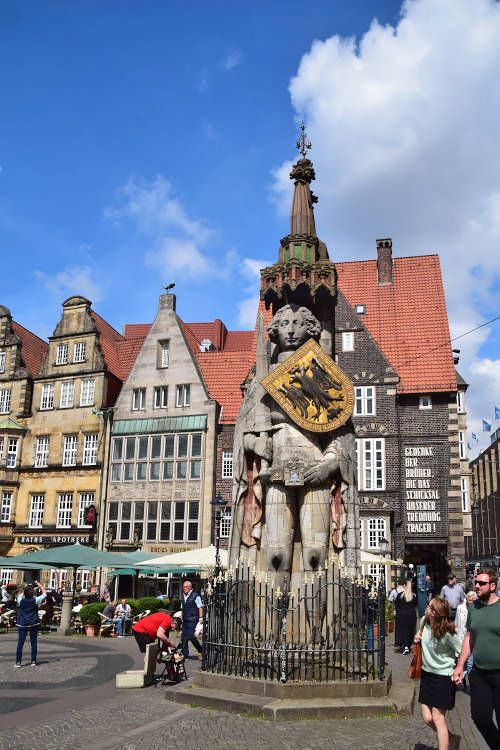
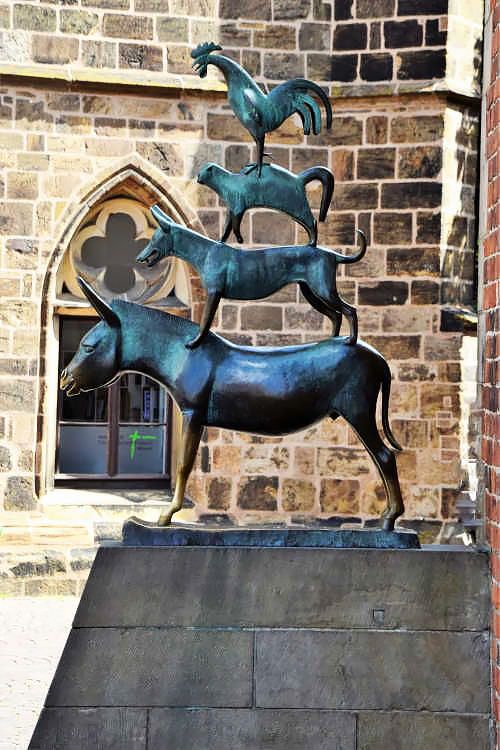
Weser Promenade
The Bremen locals call the promenade the “Schlachte”. These are the pile-like structures used in the Middle Ages to reinforce the banks of the Weser. Now the Weser Promenade is a vibrant place where young and old enjoy the many terraces of cosy cafés and restaurants. There are regularly lovely markets here. Of course, it’s also the place to board for a delightful boat trip on the Weser. During the Christmas period, the Weser Promenade is particularly atmospheric, with Christmas markets against a backdrop of festively lit ships.
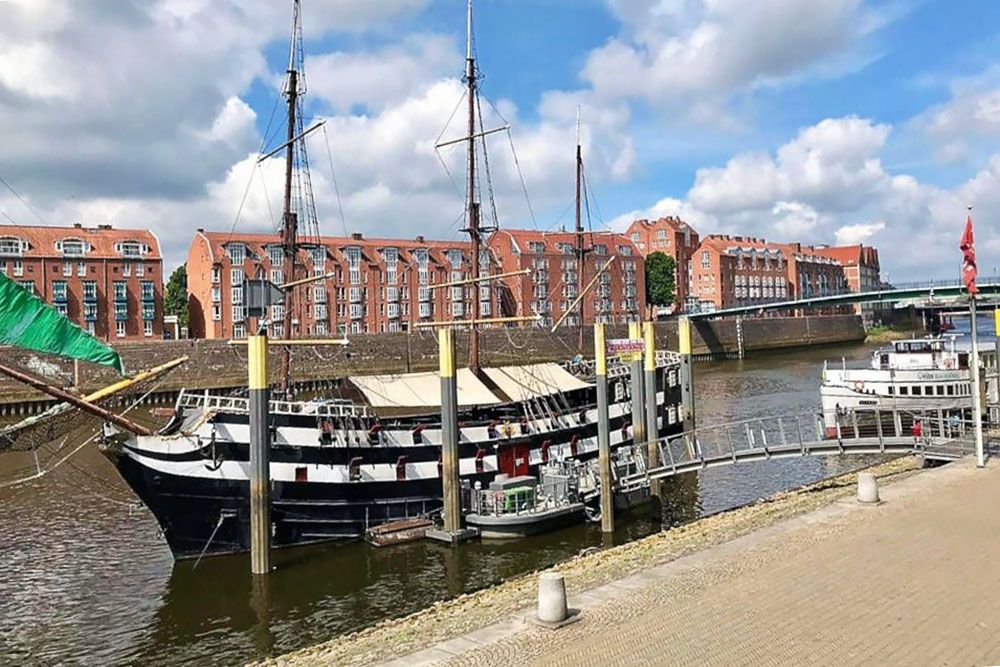
Beck’s Brewery
The pride of beer-drinking Bremen is the local Beck’s brewery. You can see the brewery across the Weser. Beer has been brewed here since 1873. Beck’s beer is Germany’s largest beer exporter. You can buy the beer with the key emblem in 120 countries. But fortunately, in Hanseatic Bremen, the beer is also available on every terrace. True beer enthusiasts can book a tour of the Beck’s brewery.
Museum of Modern Art
The Museum of Modern Art is housed in an old factory on the Teerhof peninsula. The museum offers a fine collection of internationally renowned modern art from 1960 to the present. Almost all art objects come from private collections.
If you also want to admire art from earlier periods, take a look at the Kunsthalle. Here you’ll find mainly European paintings and sculptures from the past 600 years.
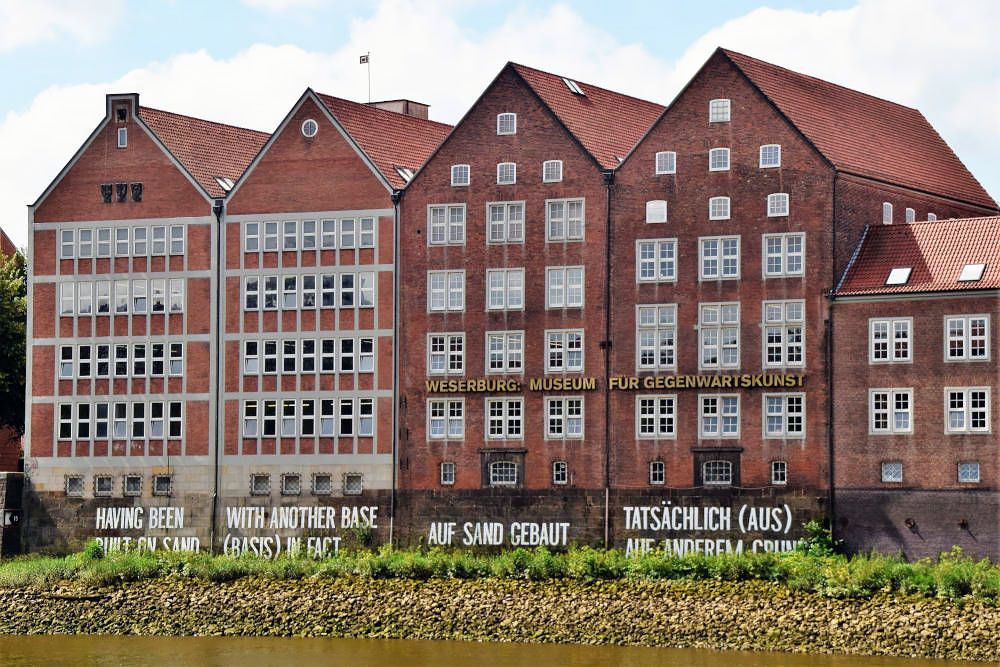
Practical Information for Your Visit to Hanseatic Bremen
Bremen is a city in northwestern Germany, located about 60 kilometers (37 miles) south of the North Sea. It is situated on both sides of the Weser River, approximately 123 kilometers (76 miles) southwest of Hamburg. Bremen, along with the city of Bremerhaven about 60 kilometers to its north, forms Germany's smallest state, the Free Hanseatic City of Bremen.
The best time to visit Bremen is generally from May to September, when the weather is most pleasant and many outdoor events take place. However, each season offers unique experiences.
Notable events throughout the year:
- Oktoberfest celebrations in late September/early OctoberBremen Freimarkt (October): One of Germany's oldest and largest funfairs
- Bremen Christmas Market (late November to December): A magical winter experience
- Bremer Eiswette (January): A quirky local tradition involving the freezing of the Weser River
- Bremen Carnival (February): Colorful street parades and celebrations
For those interested in cultural experiences, the summer months offer numerous festivals and outdoor events. Art enthusiasts might prefer visiting during quieter seasons to enjoy museums like the Kunsthalle Bremen without crowds.
A cosy café with a lovely terrace or a good restaurant is quickly found in Bremen. You'll find plenty around the Market Square. But also in Böttcherstrasse and in the old Schnoor district, there are cosy cafés and restaurants. Finally, you'll walk from beer garden to beer garden at the Weser Promenade.
What's more delightful than staying in a cosy hotel in the city after an intensive day in Bremen? Here are some excellent and atmospheric hotels in or within short distance of the centre:
- Atlantic Grand Hotel: Perfect location (ideal parking in underground car park). Very comfortable rooms.
- Monopol Boutique Hotel: Very pleasant and quiet surroundings. Comfortable rooms. Close to the centre.
- Arthotel Ana: Five minutes' walk from the Market Square. Modern rooms with stylish furniture.
Is your choice not here or is it not available? Here you'll find an overview of all hotels in Bremen.
This time, we stayed quietly in nature, half an hour's drive from Bremen. We had a lovely apartment in Berne. It's a fully renovated house by the owner, with many wooden accents. He makes all the wooden furniture himself, and it's for sale. You get a beautifully located apartment at your disposal with a spacious living room and kitchen, two bedrooms and a good bathroom.
